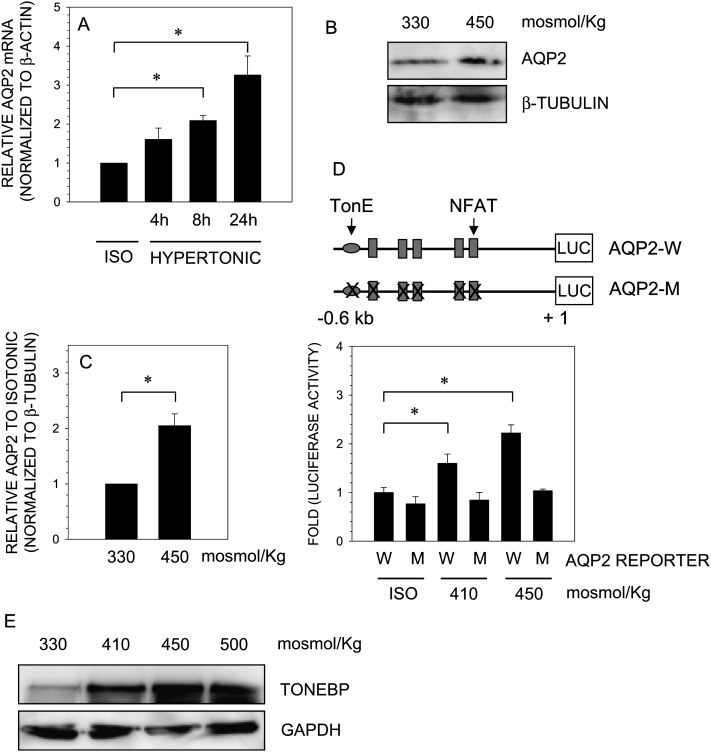FIG. 2.
Effect of osmolarity on AQP2 expression in nucleus pulposus cells. Cells were cultured in hypertonic medium (450 mosmol/kg) for 4–24 h, and AQP2 expression was analyzed. (A) Real-time RT-PCR analysis of AQP2 expression indicated a time-dependent increase in mRNA expression under hypertonic conditions. (B) Western blots analysis showed there was osmotic induction in AQP2 protein expression in NP cells. (C) Multiple Western blots of AQP2 quantified by densitometric analysis. Note NP cells exhibit induction in AQP2 levels under hypertonic conditions (D) Cartoon showing AQP2 promoter constructs used for transfections. Mutant construct (AQP2-M) contains point mutations in TonEBP and all NFAT binding motif, whereas wildtype (AQP2-W) construct contains native site. NP cells were transfected with wildtype and mutant AQP2 reporter constructs along with pRL-TK vector. Cells were cultured under isotonic or increasingly hypertonic (410–450 mosmol/kg) conditions for 24 h, and luciferase reporter activity was measured. NP cells showed an osmolarity-dependent increase in wildtype promoter activity. Mutant vector did not change its activity under hypertonic conditions. (E) Western blot analysis of the expression of TonEBP protein by NP cells at 330–500 mosmol/kg. An increase in medium osmolarity from isotonic to 500 mosmol/kg resulted in a robust increase in TonEBP protein. Quantitative data represents mean ± SD of three independent experiments (n = 3); *p < 0.05; ns = nonsignificant.

